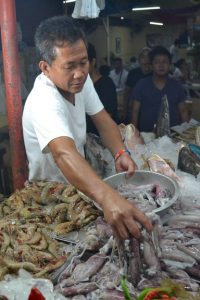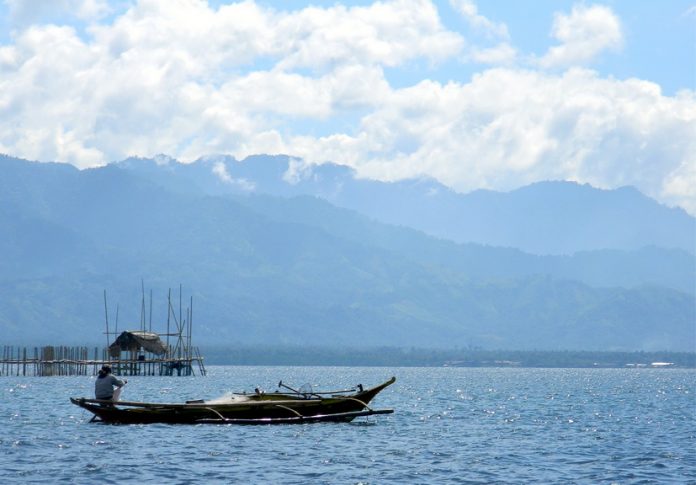To harness the vast resources offered by the seas and oceans from fisheries to mineral deposits, the Department of Science and Technology-National Academy of Science and Technology (DOST-NAST) expressed support to the so-called “blue economy” by focusing on more research and development activities.
Economist Dr. Ronald U. Mendoza, Dean of Ateneo de Manila University’s School of Government, urged science experts and the government to invest enough in the marine sector, and to use “not only science but also economics.”
In a recent scientific meeting with the theme, “Attaining Sustainable Development Goals: Philippine Fisheries and Other Aquatic Resources 20/20,” held in Cebu City, Dr. Mendoza said, “What we want out of this (blue economy) is not just the extraction (of fishes), it’s actually the sustainable management of this particular resource.”
He believed that once investments in the country’s marine sector set sail, the road towards the sustainable management of the country’s blue economy will not be far behind.
In the same meeting, Dr. Rafael D. Guerrero III, a member of NAST-Agricultural Sciences Division, stressed that there are vast opportunities the country can harbor from the blue economy and that there is a need to “prioritize the use of the seas for the benefit of the people.”
Dr. Guerrero, who was former executive director of the Philippine Council for Aquatic and Marine Research and Development, also emphasized further that blue economy can bring not just fishes but also oil, gas, minerals, and even pharmaceuticals.
“We are a maritime nation so we must behave as such,” the late Senator Letecia Ramos-Shahani once said.
The Philippines is an archipelago of 7,107 island and has 220 million hectares of water area, which is seven times bigger than the country’s total land area of 30 million hectares. With 36,289 kilometers of coastlines, the Philippines holds the record as the fifth longest.
Not only that. The Philippines is also referred to at the center of marine biodiversity, refers to the species richness and abundance in the oceans and seas. Studies have shown that 70% of the coral triangle is located in the country and it has more than 400 species of corals – plus over 2,228 species of reef fish.
“Although we have not attended well enough to them, our coastal and marine resources have been contributing billions to our economy annually (about P200 billion in one estimate),” wrote Dr. Cora Claudio, director of Asiapro Foundation in an article that was published in Philippine Daily Inquirer.
In a report released by the Food and Agriculture Organization (FAO) of the United Nations in 2014, it ranked the Philippines as the 10th among the world’s top fishing nations.
“Yet our fisherfolk are some of the poorest of our poor and close to one-half of our coastal residents are below the poverty line,” Dr. Claudio deplored.
The 2014 poverty report of the Philippine Statistics Authority (PSA) is a proof. With 39.2% poverty incidence, the fishermen in the country have been “living with an average earning of P178 a day, with less to nothing to eat every day.”
In a news report, which appeared in Business Mirror, Dr. Mendoza lamented that the economic footprint of the maritime economy in the country “is very small at this point.” This is the reason why he batted for blue economy.
According to the “Principles for a Sustainable Blue Economy,” published by the Worldwide Fund for Wildlife and Nature (WWF), there is no specific definition of the term. “For some, blue economy means the use of the sea and its resources for sustainable economic development,” the report reads. “For others, it simply refers to any economic activity in the maritime sector, whether sustainable or not.”

“The concept of a blue economy is not in competition with the green economy approach as they are interdependent,” the authors of the WWF report clarified. “Oceans are critical to sustaining Earth’s life support systems and the billions of people who are dependent on oceans for livelihoods, food security, and economic development.”
As this developed, the country’s fish production from open seas is fast dwindling and it may continue to do so in the coming years. “The total volume of fisheries production in the country from January to December 2015 reached 4,649,313 metric tons,” wrote Allalyn de Vera-Ruiz in an article published in Philippine Panorama.
But fisheries production dived by 8.7% – from five million metric tons in 2010 to 4.7 million metric tons in 2015. “In terms of value, the 2015 fisheries production was valued at P240 billion as compared with the P224.7 billion in 2011, an average yearly increment of P1.8 billion,” Vera-Ruiz wrote.
If that’s not bad news enough, most of the country’s major fishing grounds are already overfished. “Ten out of 13 (major fishing grounds) are under intense fishing pressure,” deplored Vince Cinches, Philippines oceans and political campaigner for Greenpeace Southeast Asia.
“There are just too many fishers going after too few fish,” he pointed out.
Gregg Yan, new director for Communications of Oceana Philippines, agrees: “Overfishing is the main issue, with today’s fishers ranging farther and trying harder to catch more – but there are too many fishers and too few fish.”
But some experts believe overfishing is just one part of the equation. The destruction of the coastal ecosystems is also to be blamed.
“The conditions of our fishery habitats like seagrass beds, mangrove forests, and coral reefs, which are considered to be spawning and breeding grounds for fishes and other aquatic products, are in dismal conditions,” Cinches pinpointed.
Climate change has also to do with it. Senator Loren Legarda, chair of the Senate Committee on Climate Change, said that oceans have absorbed about a third of global carbon dioxide emissions, causing acidification. This has also resulted in coral bleaching.
“Ocean acidification is causing irreversible damage to coral reefs. With global warming of up to 2°C, 98 percent of coral reefs will die by 2050,” Legarda said in a press statement issued during the recent World Ocean Day celebration.
The lady senator cited a World Bank study which showed that ocean acidification “would cause decrease in marine fish capture by about 50 percent in the southern Philippines by the year 2050.”
In addition, climate change is also causing the sea level to rise. “If global temperature rises by 2°C, sea level rise is projected to be less than 70 centimeters; with warming of up to 4°C, sea level rise is projected to be more than 100 centimeters,” Legarda claimed.
“For an archipelagic country like the Philippines, this unraveling scenario is a nightmare due to threats of inundation, decrease in fish catch, and weak tourism in marine environments. Rising sea surface temperatures and ocean acidification are projected to cause major damages to coral reef systems,” Legarda added.
Filipinos are urged to help protect the oceans. “The ocean is the lifeblood of our planet,” declared Secretary Emmanuel F. of the Department of Agriculture. “It gives us food and mitigates climate change. Every second breath we take is generated by the ocean.”
Legarda suggested: “We must adopt responsible fishing practices and sustainable marine management and conservation systems not only to improve fisheries yield but also to maintain ecological balance,” Legarda said. “We must all work together to bring back our oceans and the whole marine ecosystem to excellent condition so that our seas can benefit us in a sustainable manner.”
Meanwhile, with Philippine Rise (formerly Benham Rise) harboring 13 million hectares of oceanic plateau, both Dr. Guerrero and Dr. Mendoza agree that it is a challenge on how to sustainably manage the country’s marine and aquatic resources.
It can be – through blue economy!







